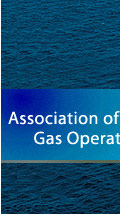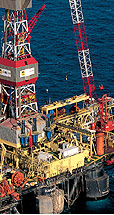Introduction :
India has 26
sedimentary basins spanning 3.14 million sq. km of which 1.35 million sq. km.
is deep water(beyond 200m isobath). A substantial part is un explored or poorly
explored, with a well density of less than 1 well per 250 sq km.
Till
late eighties the entire upstream activity was concentrated in
ONGC & OIL Ė -
the two National Oil Companies(NOCís) , and the acreage was given on a nomination
basis. In 1990ís some unexplored as well as discovered areas were opened for international
competitive bidding, and PSC regime was experimented with. This led to pronouncement
of New Exploration & Licensing Policy(
NELP) in 1998. Since then the practice of
nomination has been stopped, and the entire acreage is given through competitive
bidding under
NELP rounds.
In India, the ownership of all mineral resources
(including oil & gas) vests with the central government. It is administered through
Ministry of Petroleum & Natural Gas(
MOPNG).
Directorate General of Hydrocarbons
(
DGH) is responsible to promote sound management of Indian Hydrocarbon Resources
having a balanced regard for environment, safety, technological and economic aspects.
It plays a significant role in monitoring the upstream, contract management and
regulation. It is also the technical advisor to the Government on all technical
matters dealing with upstream.
DGHis also responsible for creating
a National Data Repository, and a National KnowledgeHub(NHK)
An Oil Industry
Safety Directorate(OISD) has been formed which is expected to play an increasing role
in HSE aspects.
An Oil Industry Development Board(OIDB) exists, to encourage
the upstream activities. These have till date been limited to NOCís,
DGH etc.
To coordinate the activities of different agencies/ministries involved with
energy , there exists an
Energy Coordination Committee in the
Prime Ministers
Office(PMO).
Government of India published a Hydrocarbon Vision 2025,
which lays the broad contours/targets for the development of Hydrocarbons.
The activities of upstream companies are governed by the Indian laws.
Thee Upstream activities in India include On land Offshore & Deepwater E&P
Coal Bed Methane(CBM) and a
National Gas Hydrate(NGHP).
Presently 40
companies are participating in the upstream E&P activities in India , of which
23 are actually operating .





